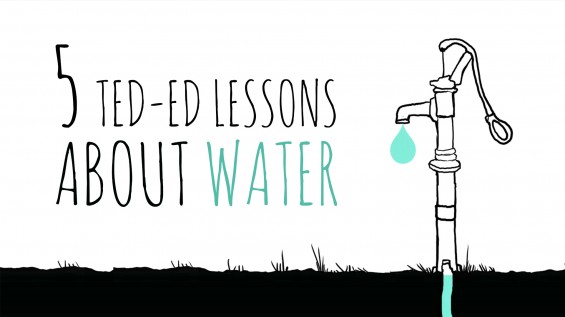
The comma: Overused and misunderstood
English teacher Terisa Folaron is the educator behind the TED-Ed Lesson Comma Story. The Lesson stars a helpful comma on a journey to support sentence construction. We asked Folaron about her Lesson and why we have such problems with the “clever comma.”
Why is the comma so important?
Commas save lives! Let’s eat, grandma! vs. Let’s eat grandma! I’m sure your grandmother would appreciate your inviting her to lunch much more than she would your eating her for lunch. Just ask her.
The Internet is filled with urban legends, links to historical documents and funny memes, all in their own way, extolling the virtues of proper comma placement. The more infamous cases include Czarina Maria Fyodorovna, who transposed a comma and accidentally saved the life of a criminal, and the Million Dollar Comma incident of 1872. Due to a misplaced comma, the United States government lost a million plus dollars by accidentally categorizing certain plants as duty-free. With all the hubbub regarding commas, one might think that figuring out commas was easy.
The comma is such a tiny fragment, such a small wisp. Yet for being so small, it is able to create order amongst ideas, names, numbers, dates, and lists of items.
Why don’t we know how to use the comma properly?
Some of the rules are more stylistic choices. I, like many of my peers, grew up hearing that commas should be placed wherever there was a pause in a sentence. While this advice sometimes works, it shouldn’t be applied as the norm. The “pause rule” can be traced back to 200 B.C. in Egypt. Aristophanes, a librarian, devised a three-part system of notation. Aristophanes’s earliest form of the comma advised actors when to breathe as they read their lines. Many centuries later, the pause rule still persists with writers positioning commas according to the perceived need to inhale. Language evolves, and rules change. For this reason, some grammarians refuse to refer to the rules as “rules”, opting instead for the more user-friendly term “grammar guidelines.”
What motivated you to turn the comma into a character?
As an educator, I discovered that changing elements of grammar into characters helped my students visualize what was taking place in their sentences. Some of the characters in my grammar discussions have been passed down to me, from other educators. The acronym for the conjunctions FAN BOYS (for, and, nor, but, or, yet, so) is commonly taught. Because commas take on different roles in different situations, I needed a character that could assess a situation and determine where its help was required. TED-Ed did a magical job of bringing the characters and some common comma predicaments to life.
How can we get better at properly using punctuation?
Thankfully not all rules (or guidelines) are fluid. There is good writing, and then there is writing that causes confusion. Correct comma placement helps writers effectively communicate with their readers. It may also save both of them some serious cash. When in doubt, locate sources of writing and writing tips that you can rely on. My go-tos include: Grammar Girl by Mignon Fogarty, The New York Times, The OWL at Purdue University, and my local grammarians.





you told us about comma but did not tell us about how to use it correctly. if i am missing it let me know.
Hi Ashish,
Thanks so much for leaving us a comment. The Lesson we linked to in the post contains a lot more information about that powerful little comma (see here: http://ed.ted.com/lessons/comma-story-terisa-folaron).
Of course, as our videos are just three minutes and for a wide range of learners (including those just learning how to use the comma), we just hit the basics. Have an idea that gets more specific with commas? Submit your ideas here: http://ed.ted.com/suggest_a_lesson
Thanks,
TED-Ed
This lesson is unsatisfactory because it does not explain a) all of the possible kinds of use of the comma, b) why with conjunctions the comma is not always needed. Certain text books on comma use do list a) and explain b) better, although I would agree that not all of the decision-making is exact.
Hi David,
We appreciate your thoughtful comment.
We certainly agree that this Lesson only scratches the surface of the comma world, but what a wonderful introduction it is.
Here is a little more information about our process. We work with educators and animators to create quite short educational videos (mostly around the 3 minute mark) and usually can only focus on one aspect of the subject the educator is teaching. We also work with the educators to make the Lessons a bit more complete in the Dig Deeper section on our website (http://ed.ted.com/lessons/comma-story-terisa-folaron#dig). Here, we include links that help students and teachers further navigate the subject.
Hopefully, this won’t be our sole Lesson on commas. Do you have an idea for another Lesson that includes more information? We encourage you to submit here: http://ed.ted.com/suggest_a_lesson
Thanks so much!
TED-Ed
English is a difficult language to speak and write. Hence, any clear thinking and use of the language is “golden”. Thank you Ted and Terisa Folaron (especially for the references you cited).
Hi, It’s a great lesson, yet I would say it’s more like an alternative or “physics-related” theory of grammar. In 21st century such a concept can be even called a science like Optimality theory in linguistics – http://en.wikipedia.org/wiki/Optimality_theory .